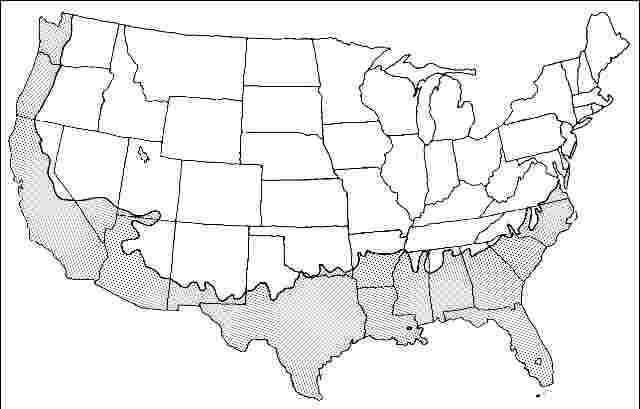Introduction
With its narrow columnar habit of growth, this evergreen forms tall, dark green columns 25 to 40 feet in height but are often shorter in the east. 'Glauca' has blue-green foliage and tight columnar form. Trees are normally no more than 3 feet wide. The scale-like leaves lend a very fine texture to any setting. Planted three feet apart, they make a dense screen. Italian cypress is often used for framing, as a strong accent around large buildings, or in the formal landscape but does not lend itself well to many home landscapes. It quickly grows much too tall for most residential landscapes, looking much like a green telephone pole.

General Information
Scientific name: Cupressus sempervirens
Pronunciation: koo-PRESS-us sem-per-VYE-renz
Common name(s): 'Glauca' Italian cypress
Family: Cupressaceae
USDA hardiness zones: 7A–10A (Figure 2)
Origin: not native to North America
Invasive potential: little invasive potential
Uses: screen

Description
Height: 25 to 40 feet
Spread: 3 to 6 feet
Crown uniformity: symmetrical
Crown shape: columnar
Crown density: dense
Growth rate: moderate
Texture: fine
Foliage
Leaf arrangement: whorled
Leaf type: simple
Leaf margin: entire
Leaf shape: scale-like
Leaf venation: none, or difficult to see
Leaf type and persistence: evergreen
Leaf blade length: less than 2 inches
Leaf color: green, blue or blue-green
Fall color: no color change
Fall characteristic: not showy
Flower
Flower color: unknown
Flower characteristics: not showy
Fruit
Fruit shape: oval
Fruit length: 0.5 to 1 inch
Fruit covering: dry or hard
Fruit color: brown
Fruit characteristics: does not attract wildlife; not showy; fruit/leaves not a litter problem
Trunk and Branches
Trunk/bark/branches: branches don't droop; not showy; typically one trunk; thorns
Pruning requirement: little required
Breakage: resistant
Current year twig color: brown, gray
Current year twig thickness: thin
Wood specific gravity: unknown
Culture
Light requirement: full sun
Soil tolerances: sand; loam; clay; acidic; alkaline; well-drained
Drought tolerance: high
Aerosol salt tolerance: moderate
Other
Roots: not a problem
Winter interest: no
Outstanding tree: no
Ozone sensitivity: unknown
Verticillium wilt susceptibility: resistant
Pest resistance: sensitive to pests/diseases
Use and Management
Growing in full sun on various well-drained soils, Italian cypress should be planted in a well-prepared site and watered periodically until well-established. Italian cypress should not be pruned. It is very susceptible to mites and trees are often infested.
Many cultivars are available: 'Stricta'—very popular; 'Horizontalis'—horizontally-spreading branches.
Propagation is by cuttings or layering.
Pests
Bagworms are occasionally a problem for Italian cypress. Mites are often a problem.
Diseases
Root rot can be a problem for Italian cypress in poorly-drained soil. Canker has killed many trees in California.